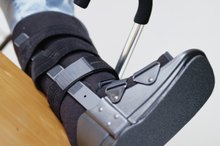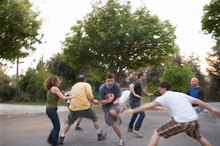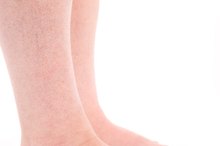If You Hurt Your Metatarsals, How Long Would You Be Out for Playing Sports?
The metatarsal bones are the bones between your ankle and toes and are susceptible to such injuries as stress fractures 2. Depending on the severity of your injury, it may take a few days to six weeks before you can return to your sport. Following through with all three phases of rehabilitation will ensure a quicker recovery as well as reduce your risk of future metatarsal injuries. Consult your physical therapist or athletic trainer about your rehabilitation timeline.
If you are experiencing serious medical symptoms, seek emergency treatment immediately.
Injuries
Metatarsalgia is a condition involving pain of your metatarsals; it can be caused by high-impact activities and improper footwear. Repetitive stress on your metatarsals from activities such as running can lead to a metatarsal stress fracture or crack. An avulsion fracture can also occur to your fifth metatarsal, which is located on the outside of your foot 1. An avulsion fracture is when a forceful movement causes a piece of your bone to break.
- Metatarsalgia is a condition involving pain of your metatarsals; it can be caused by high-impact activities and improper footwear.
Phase I
What Are the Treatments for Thigh Splints?
Learn More
The duration of phase I is between two days and 10 days. A mild case of metatarsalgia may only require a few days of treatment before you can return to activities, whereas a stress fracture can require 10 days of treatment just in phase I. The goals of phase I are to decrease inflammation and pain and promote healing. Rest, ice and over-the-counter pain medications may reduce pain and inflammation. For stress fractures and severe metatarsalgia, wear a cast or walking boot to immobilize your foot. If you wear a cast, use crutches to assist with walking. Perform non-weightbearing cardio exercises such as biking on a stationary bike to maintain cardiovascular fitness. Other non-weightbearing exercises may be performed to maintain flexibility, as long as you are pain free.
- The duration of phase I is between two days and 10 days.
- For stress fractures and severe metatarsalgia, wear a cast or walking boot to immobilize your foot.
Phase II
Phase II lasts approximately two weeks and involves slowly returning to normal daily activities -- not including your sport. The goal of phase II is to stress your injured metatarsal bone without pain to promote normal bone healing 1. Exercises include aqua jogging, walking and single-leg balance. According to a 2002 “Journal of Athletic Training” article, you should be able to walk for 30 minutes three times a week without pain before you progress to phase III 3.
Phase III
Femoral Bone Contusions & Stretching
Learn More
Phase III is approximately three weeks in duration and helps prepare you for the physical demands of your sport. The first two weeks include running, jumping, agility drills and other sport-specific exercises. The third week, on the other hand, is a rest week to allow your fractured metatarsal to build up new bone before you fully return to your sport.
Considerations
Although most metatarsal injuries heal within six weeks, the type of injury and complications can increase recovery time. For example, if you experience pain during phase III, you may need to return to phase II exercises temporarily. Furthermore, fractures to your fifth metatarsal can require surgery and take up to 20 weeks to heal, especially if the blood supply to your bone is poor 1.
Related Articles
References
- American Academy of Orthopaedic Surgeons; Stress Fractures of the Foot and Ankle; July 2009
- “Journal of Athletic Training”; Mechanisms and Management of Stress Fractures in Physically Active Persons; William A. Romani, et al.; September 2002
- Summit Medical Group; Metatarsalgia; Pierre Rouzier, MD; 2009
- Ramponi DR. Proximal fifth metatarsal fractures. Adv Emerg Nurs J. 2013;35(4):287-92. doi:10.1097/TME.0b013e3182aa057b
- Proximal fifth metatarsal fractures. January 25, 2018.
- Dameron TB. Fractures of the Proximal Fifth Metatarsal: Selecting the Best Treatment Option. J Am Acad Orthop Surg. 1995;3(2):110-114.
Writer Bio
Since 2007 Hannah Mich has written e-newsletters and been published in the "Missouri Journal of Health, Physical Education, Recreation and Dance." She has a Bachelor of Science in exercise science from Truman State University and a Master of Education in applied kinesiology from the University of Minnesota.









